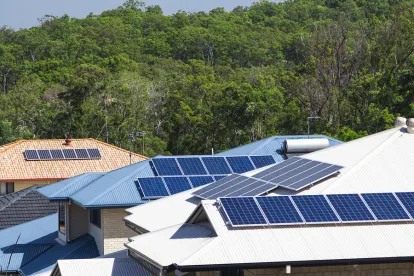The Obama Administration and the U.S. Environmental Protection Agency (EPA) on Monday unveiled the long-anticipated Clean Power Plan (the Plan), which is intended to reduce overall carbon output by, in part, promoting the installation and expansion of renewable energy resources.
In a process that has spanned multiple years and has included extensive outreach and public engagement, President Obama and the EPA announced a multifaceted approach to bolster the nation’s reliance on renewable power. Under the Plan, renewables – such as solar, wind and hydroelectric power – are estimated to account for twenty-eight percent (28%) of the nation’s capacity by 2030, a marked increase from the twenty-two percent (22%) figure in the proposed rule.
In general, the Plan sets carbon dioxide (CO2) emission performance rates for affected power plants that the EPA says reflect the “best system of emission reduction.” The Plan largely leaves it up to the states to develop their own plans that will achieve those rates, with guidelines for the development, submittal and implementation of those plans. “[The Clean Power Plan] takes into account recent reductions in the cost of clean energy technology, as well as projections of continuing cost reductions,” the EPA stated in a fact sheet that it distributed.
In order to help states implement the Plan, the EPA is providing a Clean Energy Incentive Program (CEIP) to “reward early investments in renewable energy generation and demand-side energy efficiency measures that generate carbon-free MWh or reduce end-use energy demand during 2020 and/or 2021,” the EPA stated. “The [CEIP] is a voluntary ‘matching fund’ program that states can use to incentivize early investment in eligible renewable energy, as well as demand-side energy efficiency projects that are implemented in low-income communities.” The requirements for eligible projects under the CEIP are:
- The project must be located in or benefitting a state that has submitted a final state plan that includes requirements establishing its participation in the CEIP;
- Commencement of construction on the project (in the case of renewable energy generation) or commencement of operations (in the case of energy efficiency) must be following the date on which the state submits its final state plan to the EPA;
- For renewable energy generation: the project must generate metered MWh from wind or solar resources;
- For energy efficiency: the project must result in quantified and verified electricity savings (MWh) through demand-side energy efficiency measures implemented in a low-income community; and
- The project must generate or save MWh in 2020 and/or 2021.
When participating in the CEIP, the EPA will provide matching allowances or Emission Rate Credits (ERCs) to participating states, up to an equivalent of 300 million short tons of CO2 emissions. Wind or solar projects will receive 1 credit for 1 MWh of generation (i.e., half of an early action credit from the state and half of a matching credit for the EPA). Demand-side energy efficiency projects implemented in low-income communities will receive 2 credits for 1 MWh of avoided generation (i.e., a full early action credit from the state and a full matching credit from the EPA).
Additional information on the Plan, as well as the CEIP, can be found on the EPA’s website, which can be accessed by clicking on the link here.





 />i
/>i
